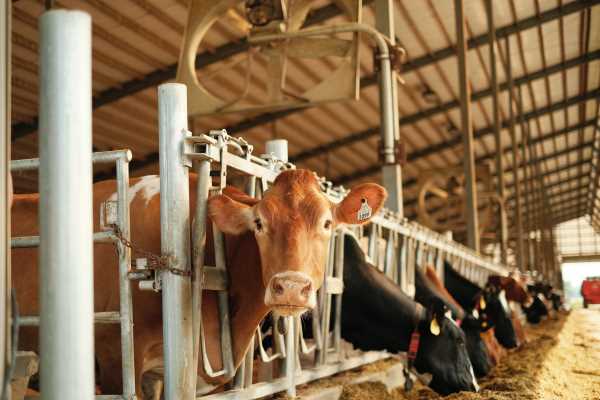Climate change affects every industry in some form or another, but food and beverage industries suffer the most. The next time you go to the grocery store, you might notice the milk section is empty. That’s because climate change is making it harder for dairy cows to produce quality milk.
If this trend continues, it might be the end of dairy production altogether. Here is a discussion of the ways climate change has affected the dairy industry and how it can adapt.
Climate-Related Risks
The biggest threat to the dairy industry is the weather’s increasing volatility due to climate change. Dairy farming relies on a balanced climate with healthy amounts of precipitation and dry spells. An excessive amount of one or the other leads to many problems. These are the harmful effects of too much rainfall:
- Loss of quality soil due to more erosion
- Loss of soil structure caused by pugging (cows tearing up the loose soil)
- More greenhouse gas emissions from the saturated soil
- More sediments and contaminants in waterways
- Damage to farm infrastructure, including crops, feeding grass, fences, roads and equipment
On the flip side, a drought makes farming much more difficult and creates an unhealthy environment for the livestock. Industry professionals call it “heat stress”, as high temperatures can change a cow’s heart rate, hormone balance, metabolism and fertility. Dairy cattle are particularly susceptible to heat stress because it adds to the heat they already emit during fermentation and lactation.
Dairy farms in West Africa are some of the most prominent examples of poor dairy cow health caused by climate change. Based on the region’s steady temperature increase since 1980, experts estimate that 22% of all cattle raised in this region now face seven days of severe heat stress above the normal amount, which could multiply to 70 as early as 2070.
Should West Africa’s disturbing trend continue, milk production could decrease by around 50-100 gallons every year by the time they hit the second half of the century. Other African regions might also be in jeopardy. South Africa produced 75% of the continent’s milk in 2012, but rising temperatures and less rainfall threaten that number.
Farmers seem aware of the situation’s urgency as they have made more efforts to reduce carbon emissions, but South Africa’s production continues to see notable losses in the late summer months. This seasonal trend and the findings in West Africa suggest a significant dairy shortage is on the horizon for the continent.
Warm, dry weather also opens the door for pests, weeds and diseases to infiltrate healthy pastures and infect the livestock. There’s been a similar issue in the seafood industry with parasitic organisms gaining access to new waters as the ocean temperatures increase.
Cows in warmer climates also tend to drink more and eat less, causing a drop in the quality and quantity of dairy products and increasing their susceptibility to disease. Farmers have to devote more energy and resources to keep the cows comfortable.
Data from a 2020 study from the Cork Institute of Technology shows that dairy farms in warm regions have higher energy expenditure than colder ones. That means the dairy industry’s collective energy consumption will only worsen as global temperatures rise — unless farmers find more sustainable ways to operate dairy farms.
Creating a Sustainable Dairy Industry
Farmers rely on the weather’s cooperation but can no longer rely on consistent temperatures. As the climate becomes more unpredictable, players in the dairy industry must find alternatives to the traditional methods that made their products successful. The most straightforward step is to buy supplemental feed so cows stay well-fed and milk production can continue despite a sudden drought or downpour.
To combat heat stress, farmers might have to change their entire operations’ infrastructures. Long-term investments in trees for shade, portable shelters and buildings with optimal ventilation will keep the cows happy and reduce energy expenditure. Farmers should also use more versatile farming equipment that can handle extreme weather and navigate rough conditions. Tractors can only do so much.
Significant dietary changes must also happen for the cows to adapt to their changing environments. The United States Department of Agriculture recommends a low-fiber, high-fat diet and feeding the animals during cooler parts of the day. This diet allows farmers to reduce the cattle’s feed intake and reduces the effort required for the animals to access the food.
Importing these exotic breeds to underdeveloped regions can significantly improve milk production — both in quality and quantity — and keep dairy industries afloat. Farmers in Kenya have already changed their artificial insemination practices to create offspring that can better tolerate warmer temperatures and produce healthy milk.
First-generation cows tend to be healthy and strong, and both Jersey and Holstein breeds have their strong points. Jerseys are more tolerant to heat and Holsteins produce more milk, so the usual combination is a Holstein heifer with a Jersey bull.
There has also been a breakthrough with a disease-resistant breed in East Africa that could solve the problem of invasive parasites. Despite the worsening climate, limited resources and genetic limitations, farmers are working hard to find solutions.
The Dairy Industry Needs an Overhaul
In summary, the dairy industry needs a major overhaul if it wants to survive the rising temperatures and extreme weather conditions. Changes to the animals’ diets, the equipment, farm infrastructures and the cattle themselves may be necessary. Whatever they decide to do, farmers must be swift and decisive with their changes.

Jane is an agriculture and environmental journalist and the founder and editor-in-chief of Environment.co, where she covers sustainability and eco-friendly living.









